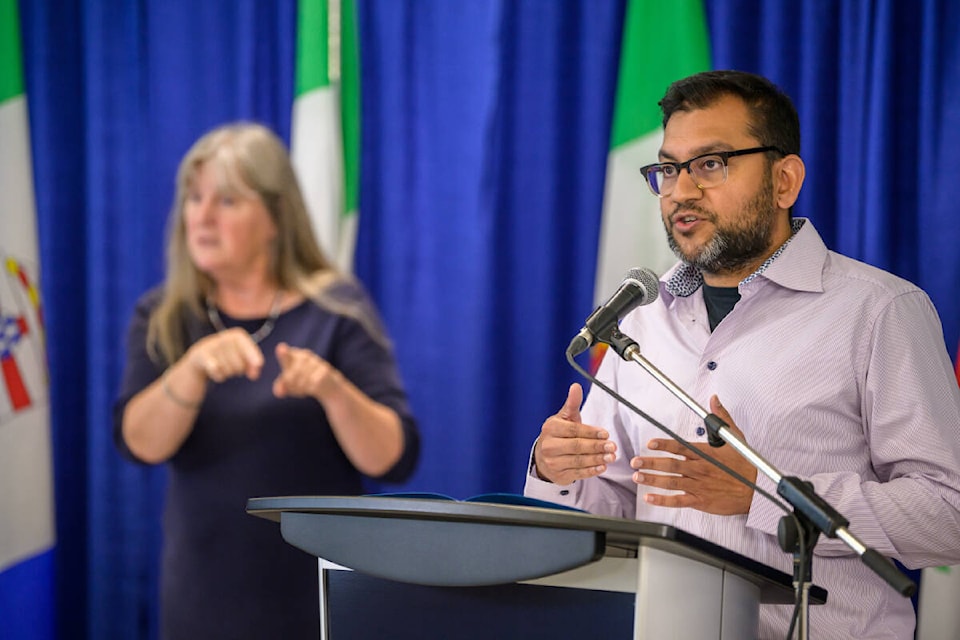The territory can expect a spike in respiratory illnesses similar to other parts of the country while the COVID-19 pandemic is still at play, the Yukon’s chief medical officer told the Yukon Legislative Assembly.
Dr. Sudit Ranade appeared as a witness in the Chambers on Nov. 14.
“Nobody can say for sure exactly what the surge will be or when it will come, and you will see it through health-system indicators like emergency department visits and admissions,” he said in response to a question raised by Yukon Party Leader Currie Dixon.
Ranade said the question is about the degree of health-system preparedness to deal with different pressures such as staffing, infrastructure and the prevalence of illnesses in the community.
Dixon then prompted Ranade to give his assessment of the Yukon’s hospital and health-care systems’ readiness.
Ranade expressed concern about the impact of transferring patients to other jurisdictions out of territory to receive care, noting he doesn’t know enough about the way this system works to be certain about surge capacity.
“The challenge that many northern communities have highlighted in calls that I have been on — and so I will reflect that here — is that when those jurisdictions to whom patients are sent become overwhelmed, they start thinking about how they can manage their own capacity,” he said.
When asked by Dixon why the Yukon government isn’t mandating mask use at this time, Ranade clarified his role is to provide recommendations or advice and then the government decides if mandates are advisable based on those recommendations and other factors.
“The question that you have to ask about these interventions, in terms of a mandate, is: What impact do we think they will have, how much impact, and how much impact if they are used in isolation?” he said.
Ranade said many people have resumed a “full set” of social activities.
“I think that it is important now to think about what impact would interventions in public or congregate settings have, given that people have continued to socialize to what you might consider pre-pandemic levels, and what impact would those interventions actually have, if people are engaging in activity that presents significant risk of transmission.”
His advice: if a person is symptomatic, then that raises the possibility of being infectious.
“The general advice around a symptomatic person would be to isolate yourself to the extent that you can,” he said.
“But if there are circumstances under which you can’t, that’s a situation in which I would definitely recommend the use of a mask, and that is because if your own respiratory secretions are more likely to be infectious because you are unwell, then the use of a mask can protect the environment around you from those secretions.”
He also stated his position in terms of mask-wearing by people who are not showing symptoms.
“It becomes something that people can chose to do,” he said.
“I think it’s important to remember that, for a fully asymptomatic person, the likelihood that they either have disease or are infectious is fairly low.”
Ranade is still recommending mask use in health-care settings.
Dixon asked what scenario or changes might have to occur for the advice to shift in stringency.
Ranade responded that pressure on the health-care system could lead to interventions, as could a COVID-19 variant causing severe disease in vaccinated people.
“It is hard to say exactly how much impact just the use of mask mandates would have in terms of reducing transmission without accompanying public health measures, such as reducing social gatherings and so forth,” he said.
When Dixon asked when should someone seek testing for COVID-19, Ranade noted the intensity of symptoms determines the need for PCR testing.
“The thinking is that mild symptoms of COVID-19 can be managed similarly to mild symptoms of influenza or mild symptoms of RSV,” he said.
“It’s the severity of the symptoms that dictates the need for testing rather than whether or not you think you might have a particular disease.”
Yukon NDP MLA for Vuntut Gwitchin, Annie Blake, asked for the rationale behind ending the COVID-19 dashboard and shifting to a broader public presentation of respiratory illnesses.
“The thinking is that, when you just look at COVID when other respiratory viruses are circulating, you get an incomplete picture of what’s happening,” Ranade said.
“This is an effort to create a more complete picture of respiratory viruses as they’re circulating.”
The NDP was also curious if Ranade’s team is planning to use waste-water surveillance.
Ranade indicated the Haines Junction waste-water pilot was being evaluated to gauge the amount of extra information collected, and its potential impact on decision-making.
Contact Dana Hatherly at dana.hatherly@yukon-news.com
